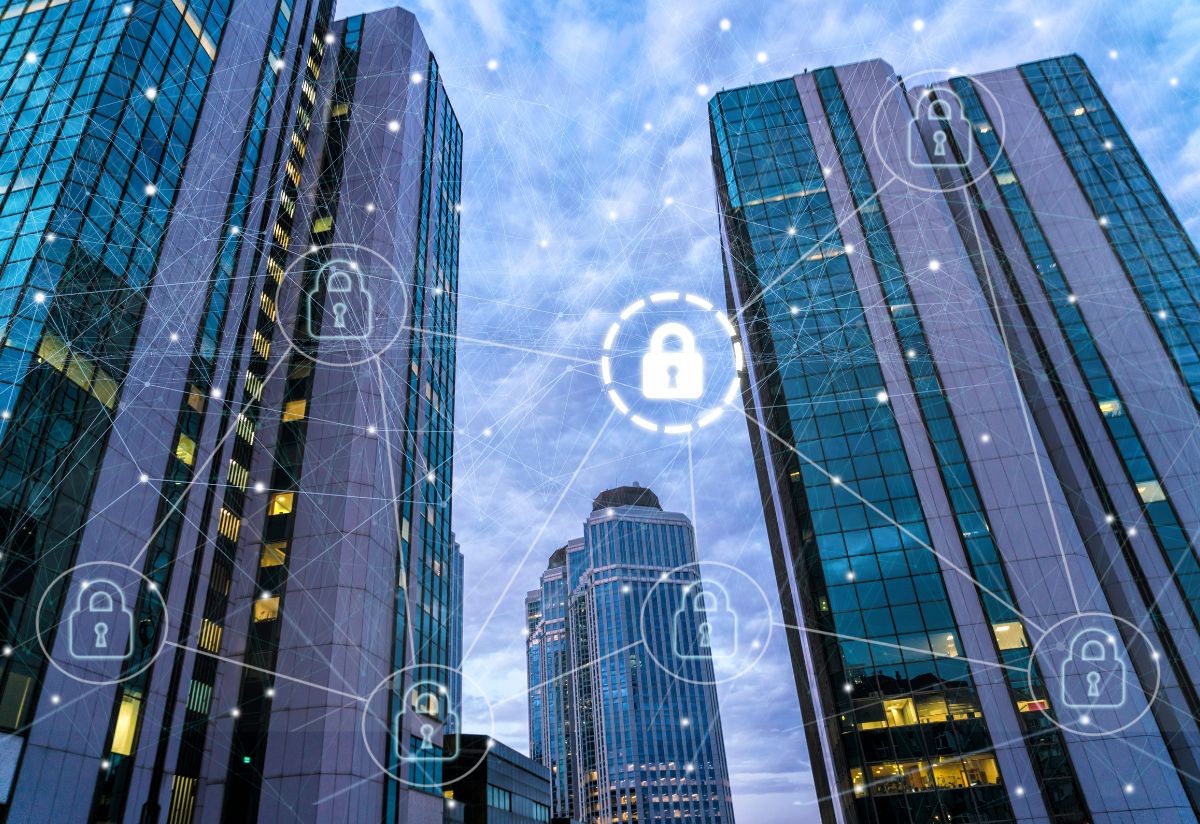Recently, businesses face a constant barrage of cyber threats. From data breaches to sophisticated ransomware attacks, the stakes are higher than ever. To address this, many organisations turn to cybersecurity frameworks as structured approaches to minimise and manage cyber risk. For businesses seeking to build resilience and improve security posture, understanding these frameworks is essential. In this blog, we’ll explore key cybersecurity frameworks that organisations use to protect their data and operations.
What Are Cybersecurity Frameworks?
Cybersecurity frameworks are structured, strategic approaches to managing and mitigating risks in an organisation’s technology environment. These frameworks offer a set of best practices, standards, and guidelines to help businesses identify, prevent, and respond to cyber threats. The objective of any cybersecurity framework is to provide a comprehensive approach to managing cybersecurity risks while aligning with an organisation’s unique needs and goals.
Frameworks aren’t one-size-fits-all solutions. Instead, they serve as adaptable roadmaps that businesses can tailor to suit their security requirements, regulatory compliance needs, and risk tolerance.
Why Cybersecurity Frameworks Are Crucial for Business:
With cyber threats constantly evolving, frameworks provide a way for businesses to keep up with best practices and regulatory requirements without having to reinvent the wheel. Key benefits of using cybersecurity frameworks include:
• Risk Reduction: Frameworks help businesses systematically identify and mitigate vulnerabilities, making it harder for cybercriminals to gain unauthorised access.
• Regulatory Compliance: Many frameworks align with industry regulations, helping businesses maintain compliance with standards like GDPR, HIPAA, or PCI DSS.
• Improved Incident Response: Frameworks offer guidance on responding to cyber incidents, reducing response times, and limiting damage.
• Operational Efficiency: By standardising processes, frameworks can make cybersecurity efforts more efficient and consistent across an organisation.
Now, let’s explore some of the leading cybersecurity frameworks that businesses rely on.
1. NIST Cybersecurity Framework (NIST CSF)
The National Institute of Standards and Technology (NIST) Cybersecurity Framework is one of the most widely used frameworks globally. Developed in the United States, it offers a risk-based approach to cybersecurity that can be customised to fit businesses of all sizes.
Core Components:
• Identify: Recognize the assets and processes crucial to the organisation.
• Protect: Implement safeguards to secure these assets.
• Detect: Develop mechanisms to quickly identify cybersecurity events.
• Respond: Define steps to respond to detected events.
• Recover: Establish a plan to restore functionality after a cyber incident.
Advantages: NIST CSF is flexible, allowing organisations to start small and expand their cybersecurity measures over time. It’s also designed to align with other regulatory requirements, making it easier to integrate into an existing compliance strategy.
2. ISO/IEC 27001
ISO/IEC 27001 is an international standard for information security management systems (ISMS). It provides a systematic approach to managing sensitive company information, ensuring its confidentiality, integrity, and availability.
Core Components:
• ISMS: A documented system that includes policies, procedures, and risk management processes.
• Risk Assessment: A formal process of identifying and analysing information security risks.
• Control Objectives: ISO 27001 includes a list of security controls for managing information security.
Advantages: ISO 27001 certification demonstrates an organisation’s commitment to security, which can enhance customer trust and reputation. The framework is highly respected and recognized worldwide, making it suitable for businesses operating in multiple countries or industries with stringent compliance requirements.
3. CIS Controls
The Center for Internet Security (CIS) Controls is a set of 20 prioritised cybersecurity actions designed to protect against known cyber threats. Originally developed for smaller organisations, the CIS Controls have grown to be useful for businesses of all sizes.
Core Components:
• Basic Controls: Essential actions to establish basic security (e.g., inventory of devices and software).
• Foundational Controls: Intermediate security practices, including access control and malware defences.
• Organisational Controls: Advanced practices, including security awareness training and incident response.
Advantages: CIS Controls are straightforward, making them easy to implement and understand. They focus on high-impact areas, making them particularly effective for organisations with limited resources or those new to cybersecurity frameworks.
4. COBIT (Control Objectives for Information and Related Technologies)
Developed by ISACA, COBIT is a comprehensive framework for IT governance and management, which includes a strong focus on information security. COBIT aims to bridge the gap between technical cybersecurity measures and broader business objectives.
Core Components:
• Governance and Management Objectives: Defines objectives across governance, security, risk management, and compliance.
• Control Processes: Focus on planning, building, running, and monitoring security measures to ensure they align with business goals.
Advantages: COBIT’s focus on governance makes it suitable for businesses seeking a high-level, strategic approach to cybersecurity. It’s particularly useful for large enterprises and industries with strong compliance requirements, such as finance.
5. PCI-DSS (Payment Card Industry Data Security Standard)
PCI-DSS is a security standard specifically for organisations handling cardholder data. It includes strict requirements to protect customer payment data from theft and misuse, which is essential for businesses in retail, e-commerce, and any sector dealing with payment processing.
Core Components:
• Secure Network: Requirements for firewall configuration and security of cardholder data.
• Access Control: Measures to restrict access to cardholder data based on need-to-know.
• Monitoring and Testing: Continuous monitoring and regular testing of network security measures.
Advantages: Compliance with PCI-DSS is often a requirement for businesses that process credit card transactions. By following PCI-DSS guidelines, businesses can protect their customers’ data and reduce liability in case of a data breach.
6. SOC 2 (Service Organization Control 2)
SOC 2 is a cybersecurity framework designed for service organisations, particularly those in cloud computing and data processing sectors. Developed by the American Institute of CPAs (AICPA), SOC 2 focuses on safeguarding data privacy and security for clients.
Core Components:
• Trust Service Criteria: SOC 2 audits focus on five trust principles—security, availability, processing integrity, confidentiality, and privacy.
• Controls and Audits: The framework mandates regular audits to ensure that service organisations meet their data protection commitments.
Advantages: SOC 2 compliance is valuable for companies that provide services to other organisations, as it enhances client trust by demonstrating a commitment to data security and privacy. It’s often requested by clients who need assurance that their data is being handled securely.
How to Choose the Right Framework
Given the variety of cybersecurity frameworks, it’s essential for organisations to choose the one that best aligns with their business needs, industry regulations, and risk tolerance. Here are some factors to consider:
• Industry Requirements: Many industries have specific regulations or standards. For example, organisations handling payment data should consider PCI-DSS, while cloud service providers may benefit from SOC 2.
• Organisation Size: Smaller companies may find frameworks like the CIS Controls more manageable, while larger organisations might prefer NIST or ISO 27001 for their comprehensive nature.
• Risk Profile: Businesses with a high risk of cyber threats may require a more robust, layered framework such as NIST CSF or ISO 27001 to address various threat vectors comprehensively.
• Resource Availability: Implementing frameworks requires time, staffing, and budget. Organisations with limited resources might start with simpler frameworks, such as CIS Controls, before moving to more extensive frameworks like ISO 27001 or COBIT.
Conclusion: The Power of Cybersecurity Frameworks in Building Resilience
In a world of evolving cyber threats, cybersecurity frameworks provide a crucial foundation for building resilience. By adopting a structured approach to identifying, mitigating, and responding to risks, businesses can better protect themselves against cyber-attacks, minimise the impact of security incidents, and maintain customer trust.
The right cybersecurity framework helps organisations streamline security processes, prioritise high-risk areas, and ensure compliance with industry standards. For any business, whether it’s a small startup or a large enterprise, investing in a cybersecurity framework isn’t just about compliance; it’s about creating a culture of security and ensuring long-term business sustainability. By selecting and implementing the right framework, businesses can build a solid defence, respond effectively to incidents, and contribute to a safer digital ecosystem for everyone.
Ultimately, the journey toward robust cybersecurity is an ongoing process. But with the right framework in place, businesses can confidently take the first steps to reduce cyber risks and safeguard their most valuable assets.
Abdulhaleem Lukmon

Created by Abdulhaleem Lukmon as part of the Mentoring Training Programme
This document is strictly private, confidential and personal to its recipients and is the sole property of Lateral Connect and should not be copied, distributed or reproduced in whole or in part, nor passed to any third party without prior permission from Lateral Connect.




Responses